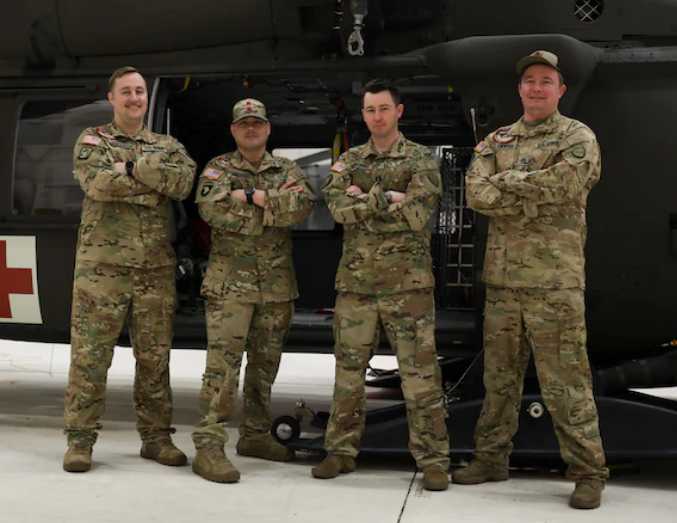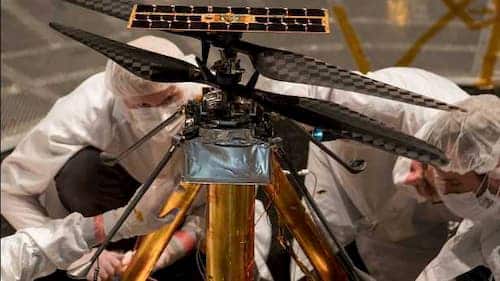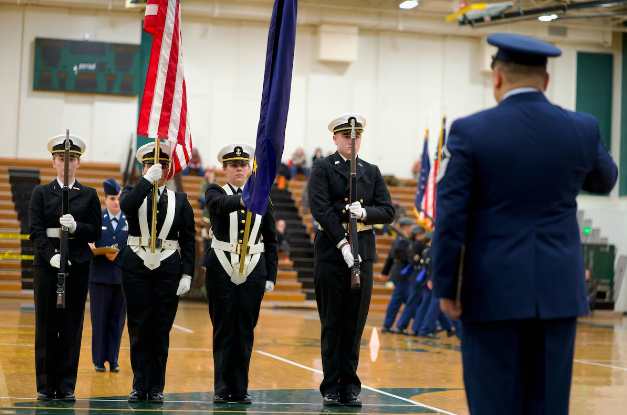
JOINT BASE ELMENDORF-RICHARDSON, Alaska — Chief Warrant Officer Two Paul Gillquist woke up for his weekend training the morning of Sept. 13, 2020 expecting to perform a routine training mission aboard his Uh-60 Blackhawk helicopter. For three years since flight school graduation, Gillquist honed his piloting skills, awaiting the opportunity to have his training put to the test outside the scope of notional scenarios.
It was a fall morning highlighted by clear blue skies when Gillquist and his medical evacuation team departed Bryant Army Airfield on JBER. As fate would have it, on the 13th of September, the aviator with the call sign “Icy 13” would answer the call he had been training for.
At approximately 11 a.m., aviation Soldiers with Golf Company, 1st Battalion, 207th Aviation Regiment, that specialize in medical evacuation, diverted from their training mission led by Gillquist, and were tasked with a rescue mission involving two lost hunters near the village of Tyonek.
“We all volunteered to be part of the MEDEVAC team to save lives and are constantly training to be the best we can be,” Gillquist said. “Real world rescue missions are few and far between, so when the opportunity arises, to put our training to use, we couldn’t be more driven to accomplish the mission.”
Within 15 minutes of being alerted of the rescue mission and receiving mission and weather briefings, Gillquist and his crew departed the airfield toward their designated grid equipped with medical equipment and the expertise needed to preserve life. Although unaware of what challenges lie ahead, they were eager to perform.
[content id=”79272″]
When they arrived on location 20 minutes later, they hovered above a vacant wood line. There was no sign of the two hunters.
“We immediately began using a combination of clover patterns and focusing on areas that the crew thought would most likely attract or funnel lost hunters due to terrain,” Gillquist said. “We mainly focused on searching around the high ground areas that hunters like to shoot from, along with rivers and terrain features they could use to navigate home.”
Within minutes, the crew spotted two men below the aircraft. They anticipated a welcome response from them, but found themselves in the middle of a potential misunderstanding.
“We realized that it was likely that the hunters didn’t know we were there to rescue them,” Gillquist said. “They just looked up, waved once, and stood there. After an inflight discussion, weighing our options, we realized there was one of two possible scenarios. Either these guys were the ones we were looking for, or we just ruined two other hunters’ day.”
Gillquist and his crew decisively agreed to land, sending crew chief Staff Sgt. Sonny Cooper to verify if the men were the hunters they were looking for. To the crew’s satisfaction, they were.
[content id=”79272″]
The flight medic, Sgt. William Bocast, advised Gillquist that the hunters were cold, wet and hungry but did not require hospitalization. The crew flew the hunters to a gravel airstrip in Tyonek, where the men lived, before returning to Bryant Army Airfield. For the first time, Gillquist had the honor of being part of real-world mission that for him, was years in the making.
“I would never wish for any fellow Alaskans to get hurt or lost in this last frontier,” Gillquist said. “It is truly rewarding and an honor to be able to give back to the state by receiving these missions. We will learn and grow from this, and take that experience on future deployments, to bring a well-rounded level of expertise to the battlefield.”
Gillquist described his decision to pursue being a pilot as the best decision he ever made. As he reflected on the successful mission. He gave high praise to his team and gave credence to the importance of taking what he’s learned and applying it to both the unit’s state and federal missions.
“I’m super proud of my crew rising to the occasion and ensuring we got out the door quickly and safely,” Gillquist said. “They performed the mission just as they train: professionally and efficiently.”
###







